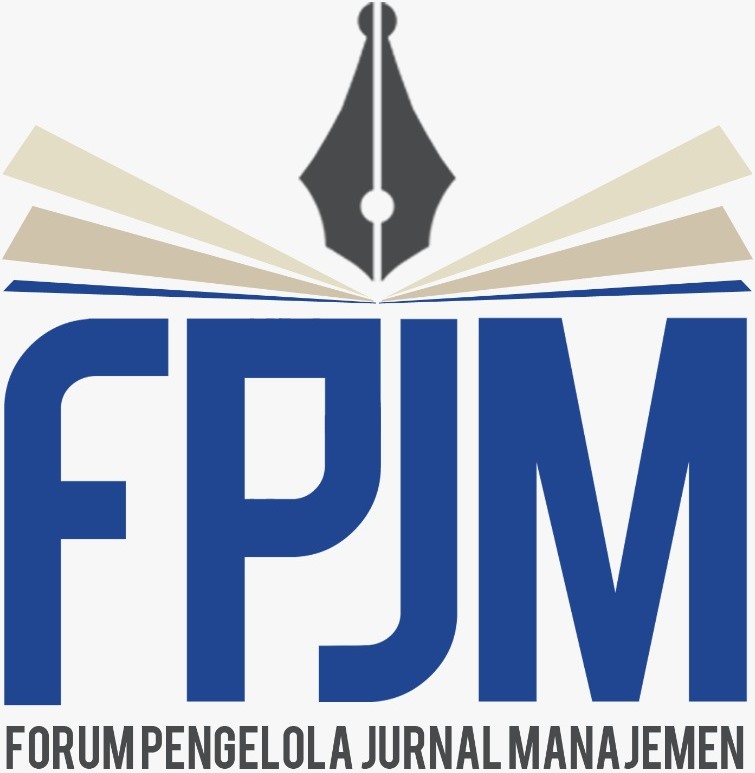ANALISA LINGKUNGAN KERJA HIBRIDA TERHADAP KINERJA KARYAWAN PADA BUMN SEKTOR KEUANGAN
Abstract
ABSTRAK
Penelitian ini bertujuan untuk mengidentifikasi karakteristik karyawan dan menganalisis pengaruh lingkungan kerja hibrida terhadap kinerja karyawan. Penelitian ini menggunakan metode analisis deskriptif dan SEM-PLS. Karyawan kantor pusat PT Pegadaian yang dijadikan sampel dalam penelitian ini adalah 213 orang, yaitu 148 karyawan sudah memiliki pengalaman profesional, 173 orang merupakan karyawan tetap dan 136 orang belum memiliki pengalaman rotasi pekerjaan. Hasil analisis menunjukkan bahwa model kerja hibrida berpengaruh positif terhadap kinerja karyawan sehingga karyawan merasa produktif saat bekerja di kantor. Hasil ini menunjukkan bahwa manajemen PT. Pegadaian (Persero) dapat memfasilitasi karyawan untuk merasa produktif baik bekerja di kantor maupun bekerja dari rumah, sehingga karyawan memiliki produktivitas kinerja yang tinggi. Hal ini diartikan bahwa karyawan merasa nyaman, baik bekerja di kantor (WFO) maupun bekerja dari rumah (WFH), sehingga memiliki produktivitas kinerja yang tinggi.
ABSTRACT
This research aims to identify employee characteristics and analyze the influence of a hybrid work environment on employee performance. This research uses descriptive analysis methods and SEM-PLS. The PT Pegadaian head office employees sampled in this study were 213 people, as well as 148 employees with work periods of 1-5 years. Apart from that, 148 employees already have professional experience, 173 people are permanent employees and 136 people have no job rotation experience. The results of the analysis show that the hybrid work model has a positive effect on employee performance so that employees feel productive when working in the office. These results indicate that the management of PT. Pegadaian (Persero) can facilitate employees to feel productive whether working in the office or working from home, so that employees have high-performance productivity. This means that employees feel comfortable, whether working in the office (WFO) or working from home (WFH), so they have high-performance productivity.
Keywords
References
Becker K, Smidt M. (2016). A Risk Perspective On Human Resource Management: A Review And Directions For Future Research. Human Resource Management Review. 26(2), 149–165. doi:10.1016/j.hrmr.2015.12.001
Barsade SG, Gibson DE. (2007). Why Does Affect Matter In Organizations? Academy of Management Perspectives, 21(1):36–59. doi:10.5465/AMP.2007.24286163.
Creswell, J.W. (2014). Research Design, Qualitative, Quantitative, and Mixed Methods Approaches, 4thEd. United States of America (US): Sage Publications
Eaton, S. 2003. If You Can Use Them: Flexibility Policies, Organizational Commitment And Perceived Performance. Industrial Relations, 42, 145–167. https://doi.org/10.1111/1468-232X.00285
Eurofound. (2020). Telework And ICT-Based Mobile Work: Flexible Working In The Digital Age, New Forms Of Employment Series, European Foundation For The Improvement Of Living And Working Conditions. Luxembourg: Publications Office Of The European Union
Gibson. (2001). Organisasi Perilaku-Struktur-Proses, Terjemahan Agus Dharma. Edisi 5. Jakarta: Penerbit Erlangga
Hair, J.F., Hult, G. T. M., Ringle, C. M., Sarstedt, M. (2017). A Primer on Partial Least Squares Structural Equation Modeling (PLS-SEM), 2nd Ed. Los Angeles (USA): Sage Publications, Inc.
Kraev, V. M., Tikhonov, A. I. (2019). Risk Management In Human Resource Management. Technology, Education, Management, Informatics Journal, 8(4), 1185–1190. doi:10.18421/TEM84-11
Luthans, F. (2006). Perilaku Organisasi, Edisi Sepuluh. Yogyakarta: PT. Andi.
Mariniello, M., Grzegorczyk, M., Nurski, L., Schraepen, T. (2021). Blending The Physical And Virtual: A Hybrid Model For The Future Of Work. Policy Contribution, 14(21). https://www.consilium.europa.eu/ en/press/pressreleases/2021/05/08/the-porto-declaration/
Mathis, R. L. and Jackson, J. H. (2010). Human Resource Management: Essential Perspectives. Cincinnati, Ohio: South-Western College Pub.
Milkovich dan Boudreau. (2005). Compensation Eighth Edition. New York: International Ed, McGraw Hill
Parker, S. K., Knight, C., & Keller, A. C. (2020). Remote Managers Are Having Trust Issues. Harvard Business Review.
Pradhan RK, Jena LK. (2017). Employee Performance at Workplace: Conceptual Model and Empirical Validation. Business Perspective and Research, 5(1), 69–85. doi:10.1177/2278533716671630.
Rivai, V., Sagala, E. J. (2011). Manajemen Sumber Daya Manusia untuk Perusahaan dari Teori ke Praktik. Jakarta: PT Raja Grafindo.
Sarmah AK, Chaudhuri P. (2021). New Role of Human Resource Development in Covid-19 Crisis. Parikalpana KIIT Journal of Management, 17(1), 283–292. doi:10.23862/kiit-parikalpana/2021/v17/i1/209037
Sostero, M., Milasi, S., Hurley, J., Fernández-Macías, E., and Bisello, M. (2020). Teleworkability And The COVID-19 Crisis: A New Digital Divide? JRC Working Papers Series on Labour, Education, and Technology 2020/05, Joint Research Centre, European Commission.
Sugiyono. (2013). Metode Penelitian Pendidikan Pendekatan Kuantitatif, Kualitatif, dan R&D. Bandung: Alfabeta.
Tahir, R, Cecep, U. R., Agus, N. V. (2020). Employee Engagement as a Performance Driver of State-Owned Enterprises (SOE’s) in Indonesia. International Journal Of Innovation Technology And Exploring Engineering, 9(2), 5148 – 5143. DOI: 10.35940/ijitee.B7771.129219
Wau, J, Purwanto, P. (2021). The effect of Career Development, Work Motivation, and Job Satisfaction on Employee Performance. Jurnal Aplikasi Bisnis dan Manajemen, 7(2), 262–271. doi:10.17358/jabm.7.2.262.
Xie, J. L., Elangovan, A. R., Hu, J., Hrabluik, C. (2019). Charting New Terrain in Work Design: A Study of Hybrid Work Characteristics. Applied Psychology: An International Review, 68(3), 479–512. doi:10.1111/apps.12169
DOI: 10.34203/jimfe.v9i2.7484
Refbacks
- There are currently no refbacks.
Copyright (c) 2023 Radjab Tampubolon

This work is licensed under a Creative Commons Attribution-NonCommercial-ShareAlike 4.0 International License.











